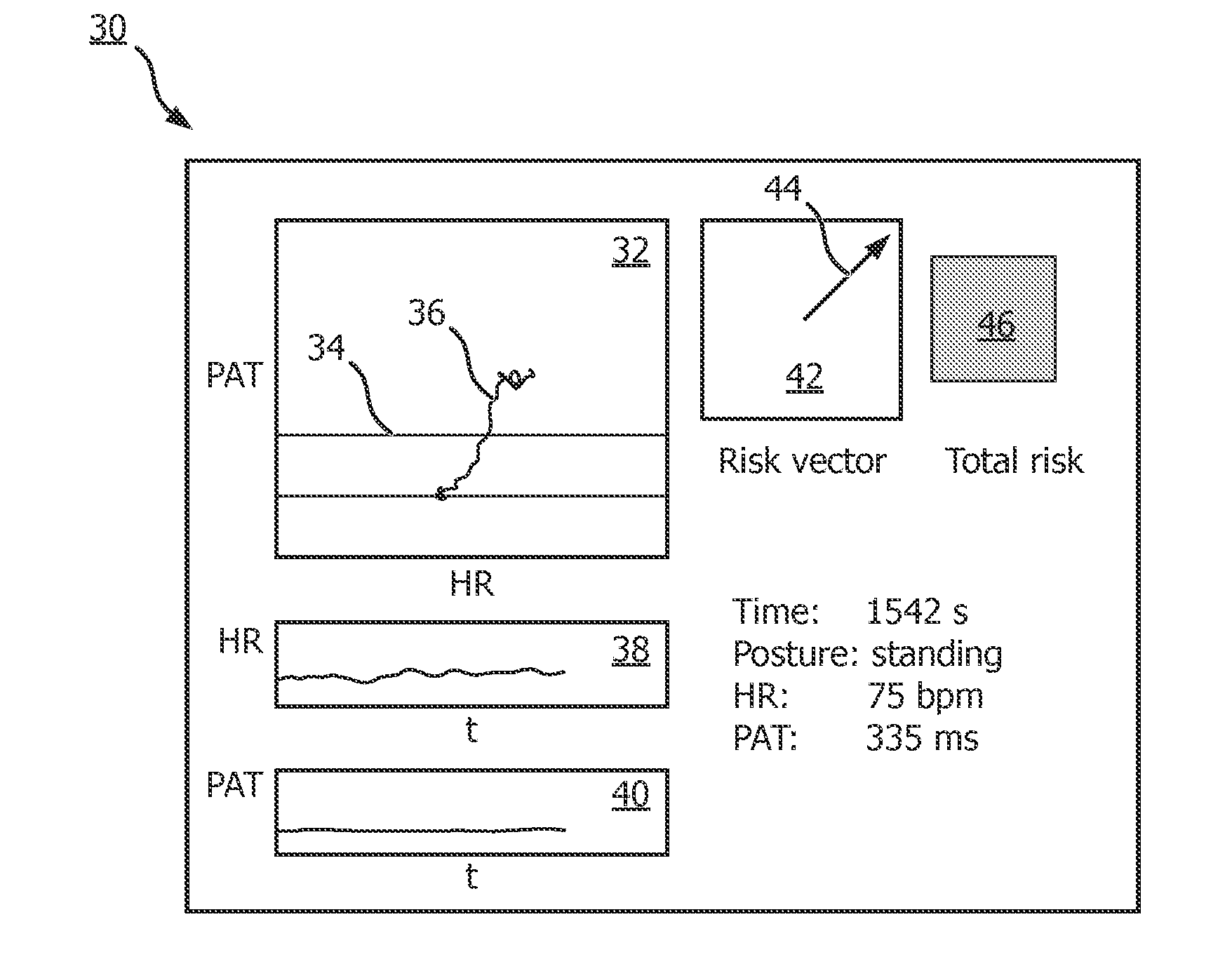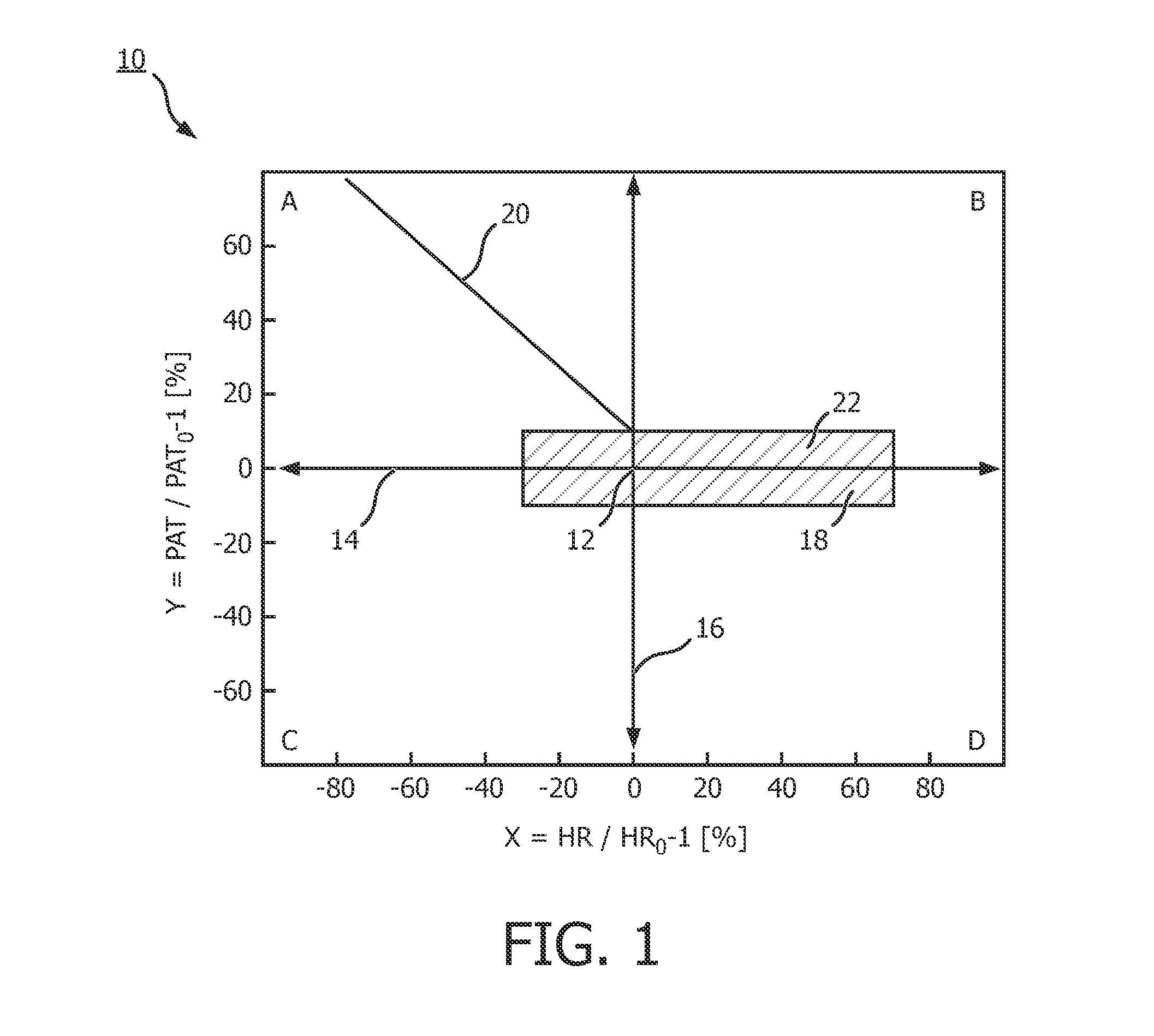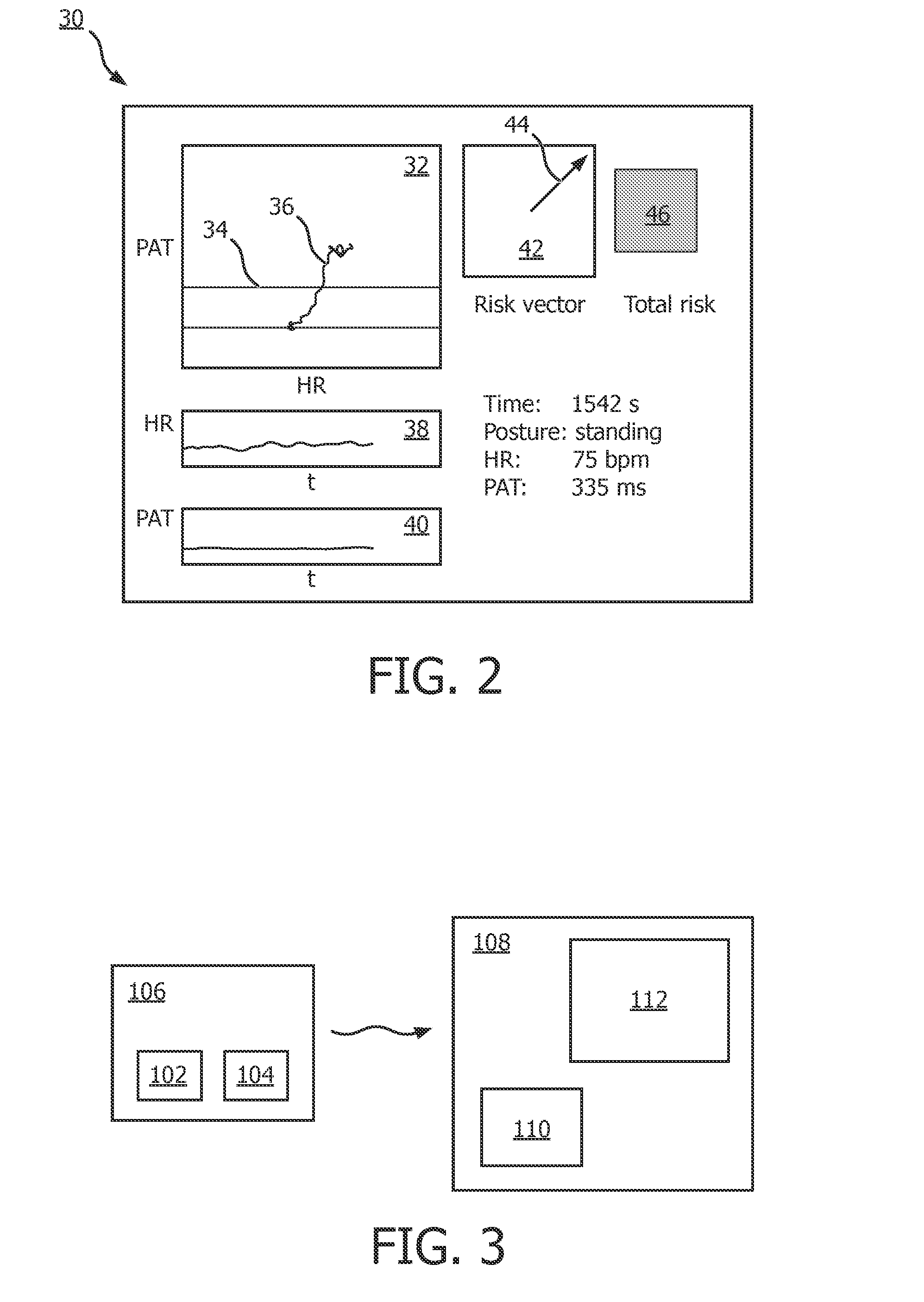Method and device for detecting a critical hemodynamic event of a patient
a hemodynamic event and patient technology, applied in the field of detecting a critical physiological state of a patient, can solve the problems of regulation failure, critical patient state related to such regulation failure, and often not or recently noticed, and achieve the effect of improving patient safety
- Summary
- Abstract
- Description
- Claims
- Application Information
AI Technical Summary
Benefits of technology
Problems solved by technology
Method used
Image
Examples
Embodiment Construction
[0043]In the following a first embodiment of a method for detecting a critical hemodynamic event of a patient is described. In this method a set of values of physiological parameters of the patient is measured permanently to acquire sets of values related to different points of time t. The values represent the output of a plurality of sensors, including one sensor for measuring a value of the heart rate (HR) and another sensor for determining a value of the pulse arrival time (PAT). PAT can be measured as the time interval between the R-peak in the ECG and a feature of a measured signal related to a passing pulse in an artery at a certain body position using, for example, a PPG sensor or a piezoelectric sensor. For each point of time t, a set of two values is gained, namely one value for the heart rate (HR) and one for the pulse arrival time (PAT). As it will be laid out in the following, this combination of two physiological parameters can be used to derive a certain risk of the oc...
PUM
 Login to View More
Login to View More Abstract
Description
Claims
Application Information
 Login to View More
Login to View More - R&D
- Intellectual Property
- Life Sciences
- Materials
- Tech Scout
- Unparalleled Data Quality
- Higher Quality Content
- 60% Fewer Hallucinations
Browse by: Latest US Patents, China's latest patents, Technical Efficacy Thesaurus, Application Domain, Technology Topic, Popular Technical Reports.
© 2025 PatSnap. All rights reserved.Legal|Privacy policy|Modern Slavery Act Transparency Statement|Sitemap|About US| Contact US: help@patsnap.com



